D
Dave Coster
Guest
CHASING SHADOWS
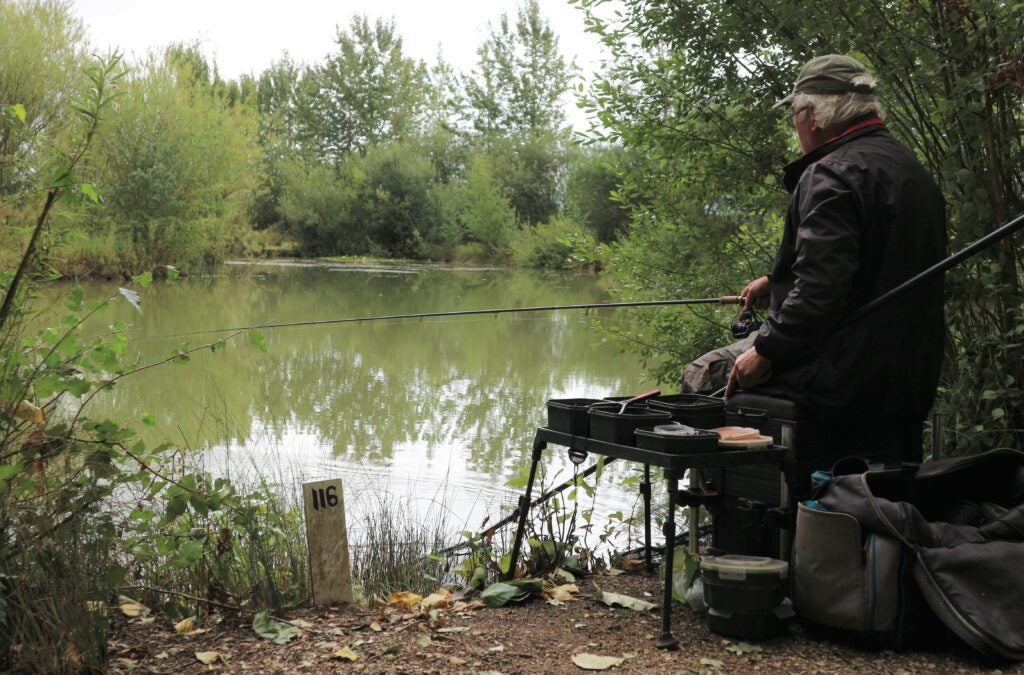
Since moving to the Midlands I have discovered a wealth of lakes that hold chub. However, this species can be notoriously difficult to catch in stillwaters, blending into the background and becoming almost ghostlike. Odd fish sometimes turn up accidentally, but specifically targeting these elusive creatures is a big challenge. I first got into chub fishing on the canals around London, which presented a few similarities to venues I now frequent. Hotspots were away from busy areas, over on the quieter far bank, where you needed to cast inch-perfectly to get a response. Good chub weights were possible, even in matches, but these fish were never easy. Chub are rarely caught in competitions on the lakes I now fish, although they can turn up on quieter days. They are like their canal cousins, hugging far-off features and rarely moving into open water. You need to explore less-used pegs, island havens, and close to inaccessible, or heavily overgrown areas.
BUSH CRAFT
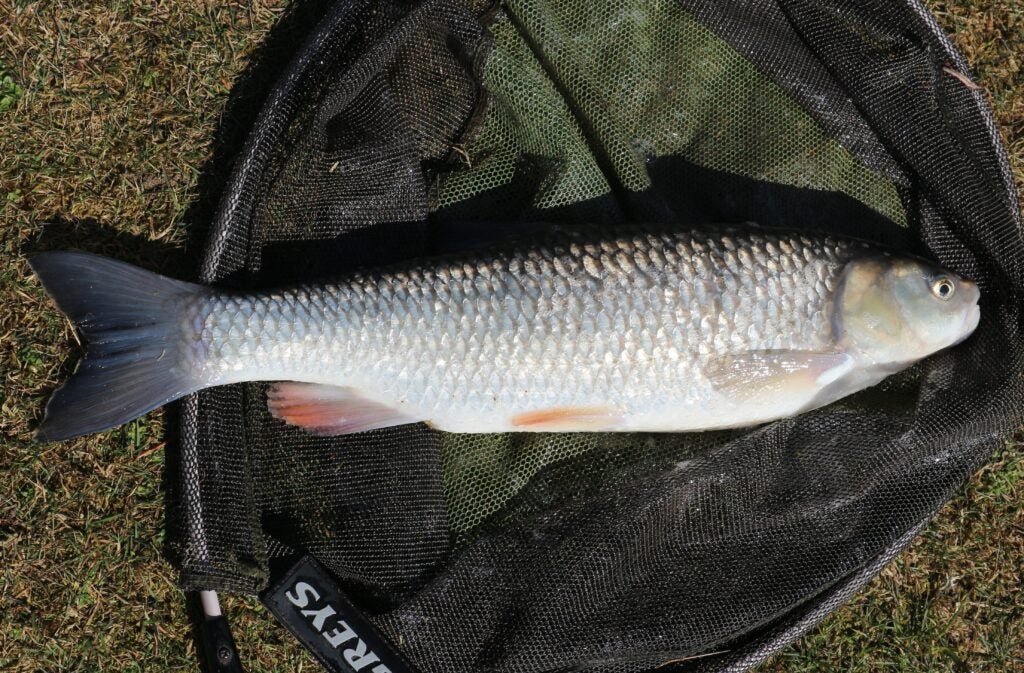
The lakes I currently visit, particularly the more overgrown ones, require all the cunning and watercraft I learnt on canals. Chub love overhanging foliage and can be difficult to entice away from it. Thick bush or tree cover are obvious haunts, but unlike canals where chub don’t have much competition, in well-stocked lakes they are often pushed away from likely features by carp. This creates swims that are not immediately obvious hotspots. It might be deeper margins, not necessarily heavily overgrown, but in less disturbed areas. Islands are obvious holding areas and can be fished the same way as the far bank on canals. The channels around them are worth exploring too, thanks to water circulation caused by undertow. Other spots chub love to inhabit are neglected, difficult to fish pegs, especially if there are lots of snags. This torpedo-shaped fish came from just such an area, where persistent loose feed eventually tempted it out.
STRANGE WAYS
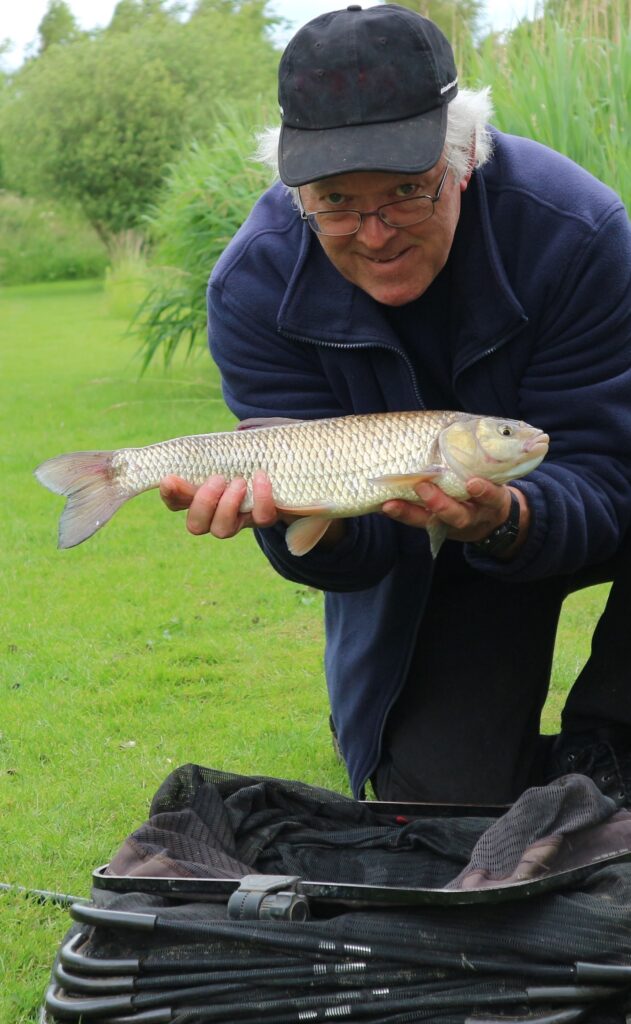
I’ve found chub in some unusual places, such as in this instance on a carp-dominated snake lake. The fish was lurking under a far bank bush, holed up with a decent perch that graced my landing net a short time afterwards. Carp were swirling tight to the far side rat holes for the loose feed I was putting in, but I had noticed the bush over to my left was strangely quiet. An occasional helping of casters, instead of the pellets the carp were mopping up, soon brought a positive response. The chub fell for a shallow rig, tucked right in amongst the foliage it was hiding under. I have to think twice on this venue now, because I suspect there’s more of these surprise fish to be found on the fringes of the ravenous carp shoals. Other stillwaters in the area, reputed to have been stocked with chub, haven’t always produced any. This is not altogether surprising, because when I owned a lake, I never again saw any of the 500 samples of this species I stocked it with.
NATURAL APPROACH
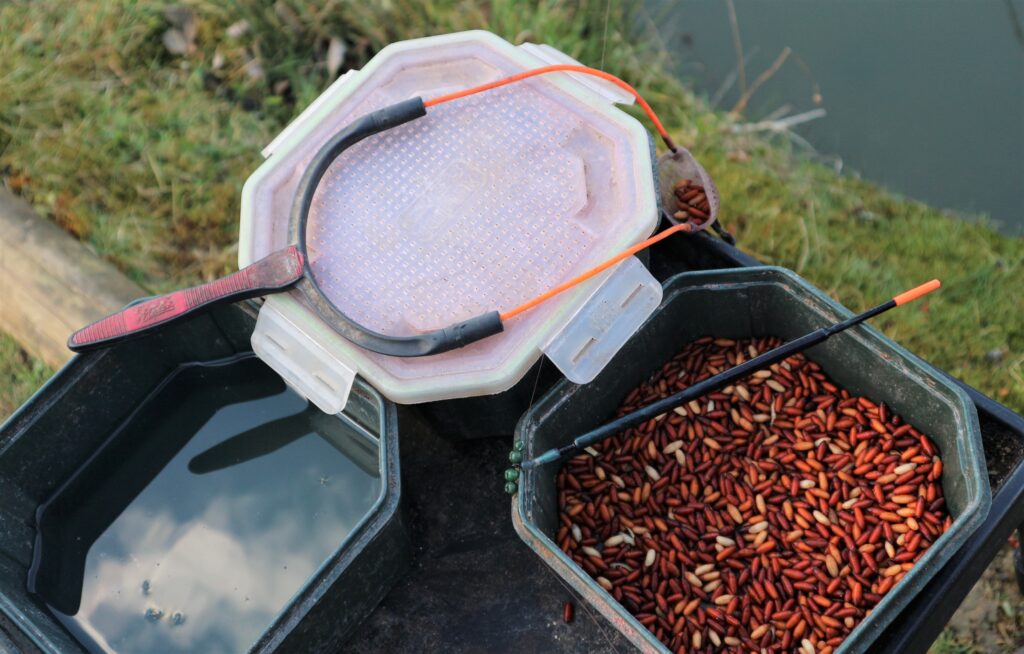
I’ve accidentally caught stillwater chub on pellets, although on venues stuffed with carp, the best way to avoid the latter species is to simply loose feed casters. Chub love this bait and by feeding little and often, it’s normally not enough free stuff to interest greedy carp, but certainly enough to wake up the target species. I suspect when chub are in the margins, they get used to picking off insects, worms and berries that tumble into the water naturally. Catapulting a few casters into these areas regularly, resembles a natural food source plopping and trickling into the water. A great trick here when fishing over to heavy bush cover, is to deliberately fire some shells right into it, so they tumble down into all the inaccessible places. Then, by feeding up against the feature, the fish underneath will gradually pop their heads out and have a go. Casters are better than maggots, being less prone to tangling with foliage when small hooks are buried inside.
RIGHT HOOKS
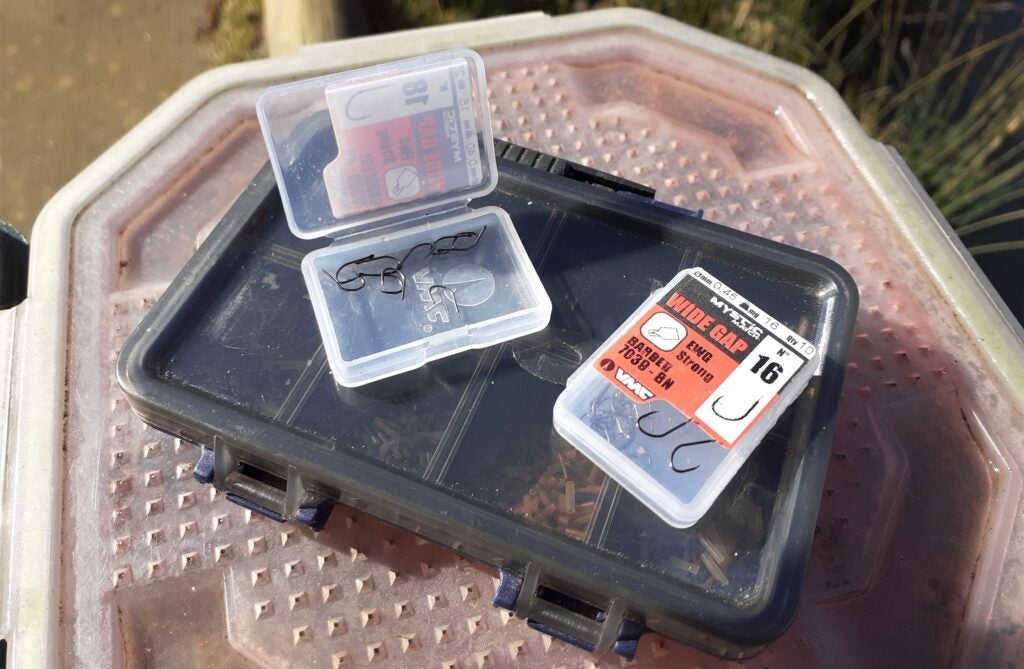
Chub are streetwise, knowing all the tricks. Give them an inch and they will trash your rig instantly. They are masters at transferring hooks into snags, and even relatively small fish pull extremely hard. Strange as it might seem, I find stillwater chub require stronger tackle than their river cousins. I often scale right down on flowing water to tempt bites, finding it possible to land big fish on light lines and medium wire hooks. But the same gear easily gets trashed in lakes, particularly when fishing tight to areas with heavy cover and underwater tangles of weeds and roots. For stillwater fishing I use 0.14mm mono, tied to super-strong VMC EWG 7039 hooks; size 16 for double casters and size 18 for a single shell. I prefer the barbless version, or remove the barb if I can’t get that design. Stepping up like this doesn’t worry me on many lakes, because generally they are a lot more coloured than most of the rivers and canals where I would expect to find chub.
GOING BACK
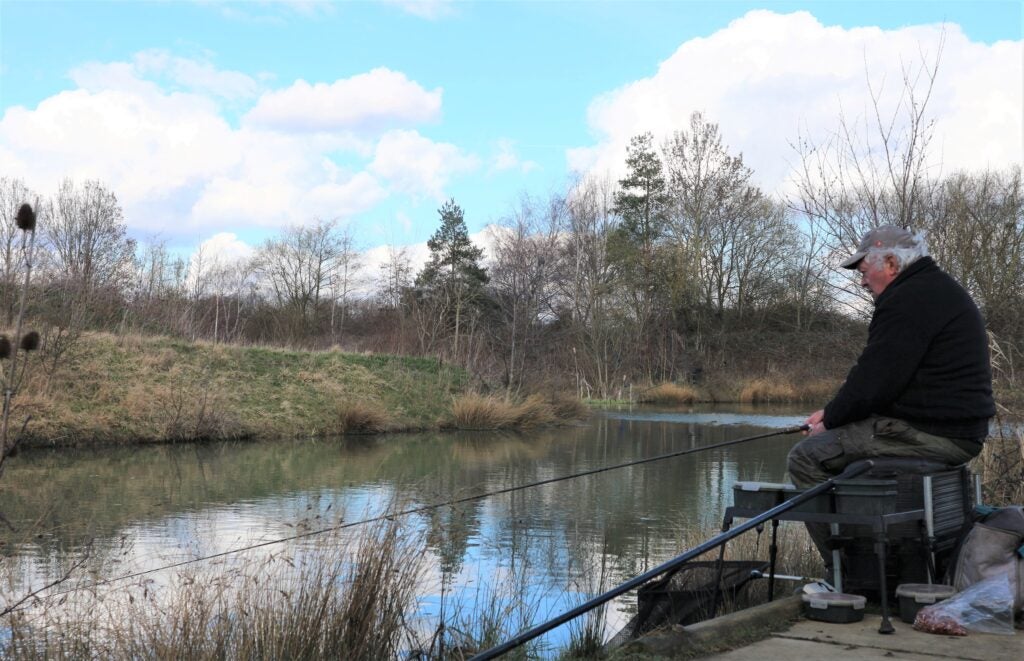
I recently revisited a local club lake I hadn’t been to for some time. The last occasion I was at this place there were several shoals of chub milling around in the clear water, but these fish were extremely shy. Go anywhere near them and they would quickly fade away. This was a shame because there were some fair-sized samples amongst them. Something had changed since then, the venue had been stocked with numerous small carp and they had stirred a lot of colour into it. No signs of any chub on the surface, but I remembered having seen a big shoal previously up the far end of the lake, where an arm can only be accessed from one side. The grassy far bank didn’t offer much cover, but it looked deep over there. I decided to give it a go with insert waggler tackle, fishing the far side in the way I would have done years ago on many of my favourite Southern canal venues. Little did I know, but some of that old magic was about to return big time.
SETTLING IN
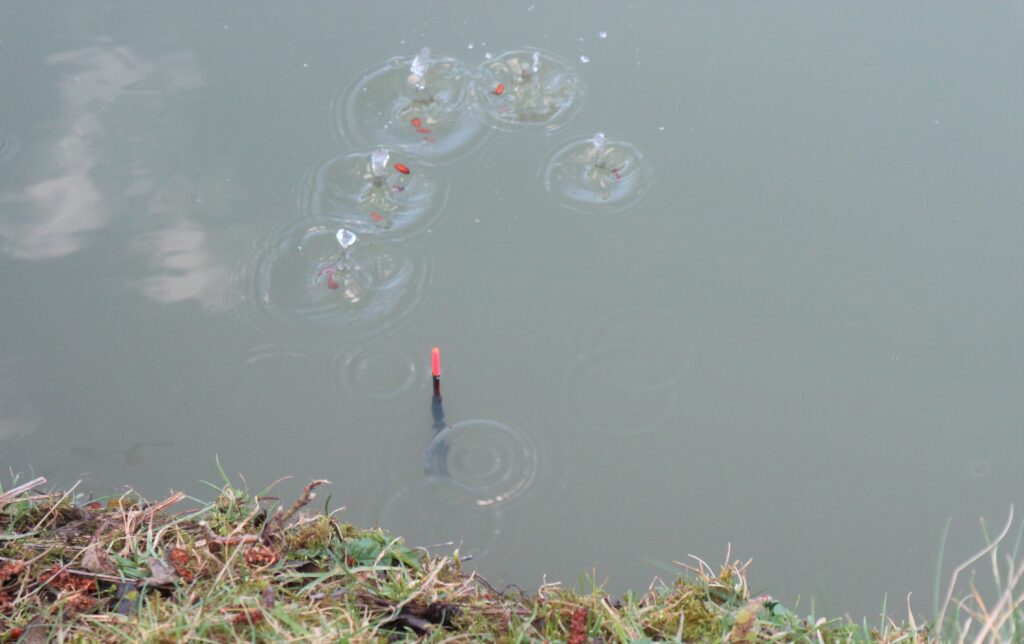
Plumbing up by using a small piece of tungsten putty on my hook, revealed a good three and a half feet of water tight to the far bank, with just over four feet down the shelf. I started in this area, about a metre out into open water. It took a while to get bites, carefully catapulting small helpings of casters around my insert waggler, trying to avoid attracting any carp. I missed the first three super-fast indications, before connecting with one of the culprits, a small gudgeon! A couple more of these fish followed before a proper bend in my 13ft float road signalled a 12oz chub. This was a great sign, but something wasn’t right because the bites dried up after that. I tried casting tighter over to the grassy far bank. I had noticed when I fed that odd fish were swirling for casters right on the waterline, also amongst odd clumps of marsh grass over there. I managed to slot my float in much closer and although my rig was now well over-depth, I left it there and waited…
IN THE ZONE
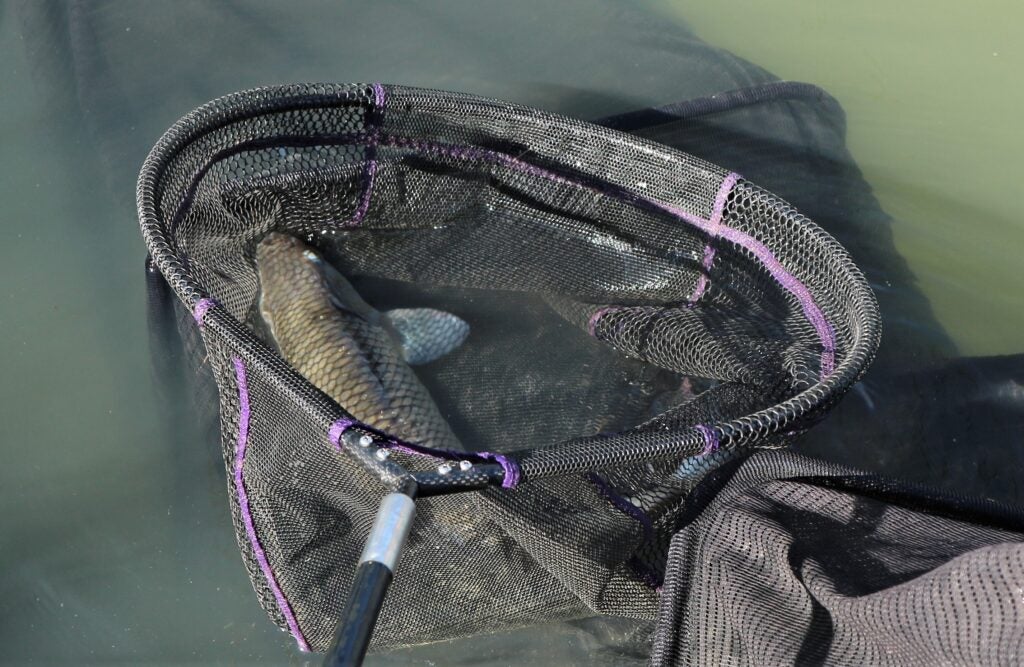
The tip of my peacock waggler didn’t go under, instead it started to glide along the far side. I struck and immediately there was a strong force attached. Something powerful and angry thumped hard against my rod tip several times, as I tried to keep it from diving into the remains of a big lily bed to my right. I had to give the fish some serious stick because, typically chub-like, it knew where all the snags were. It certainly didn’t like the open water when I coaxed it out there, so the next bag of tricks was trying to dive under the bank at my feet. My rod was arched round into a dangerous “U” shape, trying to keep the fish from the nearside roots and rushes. I eventually saw a flash of bronze under the surface and it was indeed a good chub. Once I got it in my landing net it was still thrashing about. Before unhooking, I quickly catapulted some more casters over to the far bank, to try and hold any more of the shoal that might be competing for my feed.
LIKE OLD TIMES
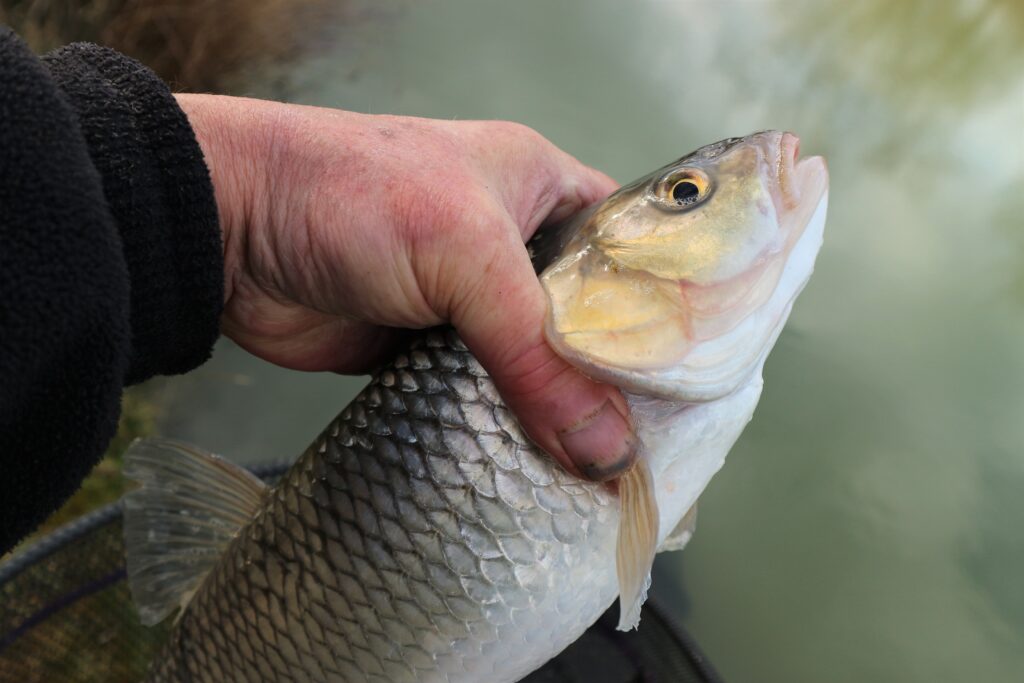
I managed to tuck my float in tight again and it wasn’t long before it sailed away. I was attached to another feisty fish, which followed the same routine the previous one had taken. This sample was even bigger and gave me a few hairy moments, particularly when I got it near the landing net. Many great memories started to flood back, catching good chub like this on similar tactics from the Lea Navigation at Ponders End and Tottenham Locks, also the Grand Union Canal at Denham and Cassiobury Park. I won matches with this species on these venues, back in the days when they were packed with chub. It was great fishing, before we had poles long enough and good enough to get over to the far bank. It all started with home-made drinking straw wagglers, then we had Canal Greys and similar Image all-balsa wagglers. Peacock came next and is still my favourite waggler material, only modified these days with translucent hollow plastic inserts.
CHANGING WAYS
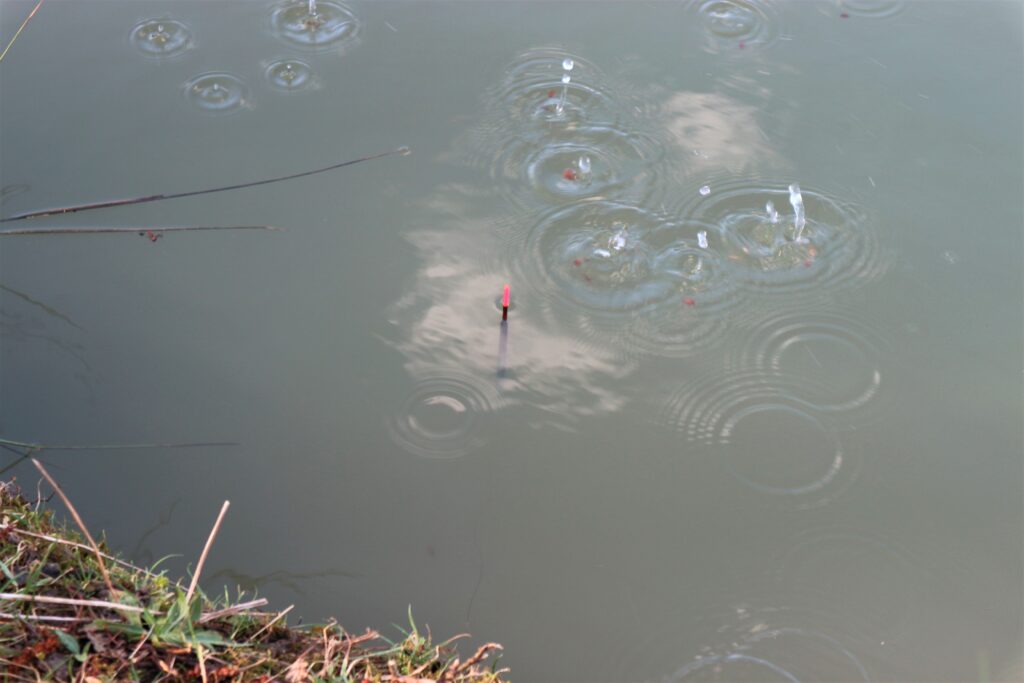
I approached this session slightly differently to how I tackled canals. Back then I would carefully prime the far bank and only go over there once the chub were feeding confidently. This would entail messing around closer in on the pole, while building up the distant swim, instead of diving straight over there. That method won me loads of matches because anglers who went straight out for the chub only caught a few early mug fish. The shoals never came back after that. By getting the chub competing for loose feed, when I started to catch them during the second half of competitions, they just kept on coming. It took strong nerve to do this, but was worth the risk, resulting in some cracking hauls. This could have been the case here, only I was on a lake in the heart of Lincolnshire, fishing alone with just one feed line on the go. I kept small helpings of casters going in and gradually the swim had come alive. The chub were not in a feeding frenzy, but close to it.
NICE RESULT
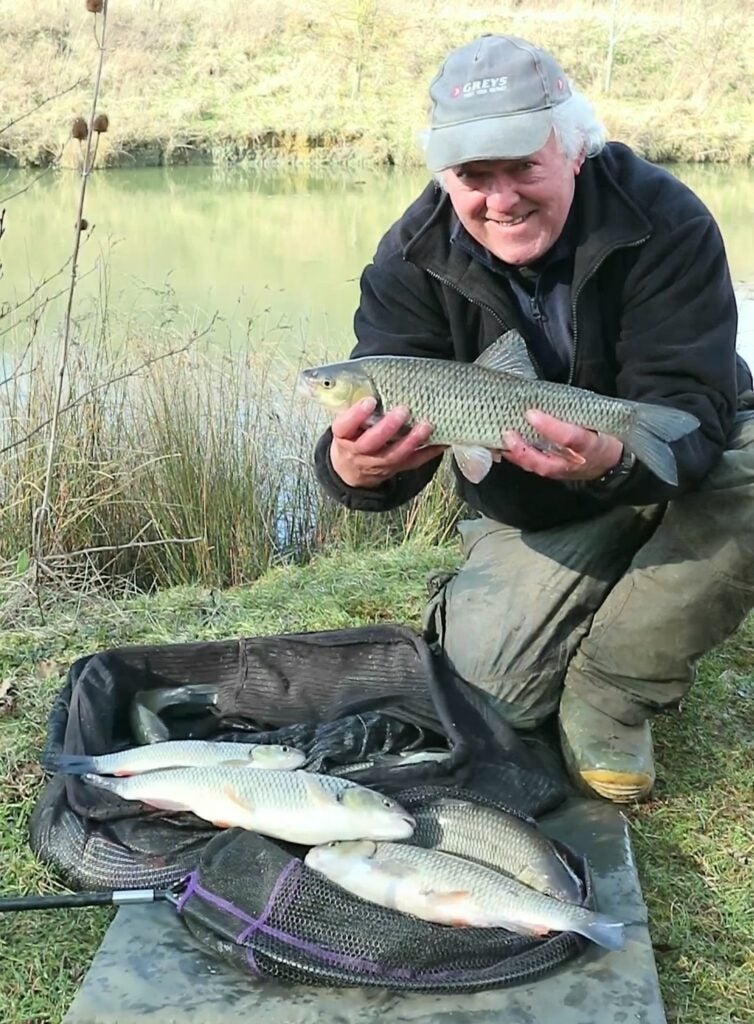
My single-minded waggler attack resulted in twenty chub of various sizes, the better ones featured in this photograph. What was interesting was, apart from the bigger fish, there were also some under the pound mark, making me wonder if this species might be breeding in this particular venue. I was also left wondering if my old way of doing things, feeding the far side swim up before actually casting over there, might have pulled in even larger fish. Most of the better samples had resulted by casting extremely tight to the far bank. I had tried dropping short and deepening off, but that only produced missed bites. It seemed to me that presenting my rig up against the bank made it harder for these shy fish to spot any danger signs. Bites were ultra-positive there. I hadn’t fed a large amount of casters, believing if I had, the ravenous carp shoals would have moved in. I planned to return and try things a bit differently, to see if I could catch some even bigger fish.
EVEN BETTER
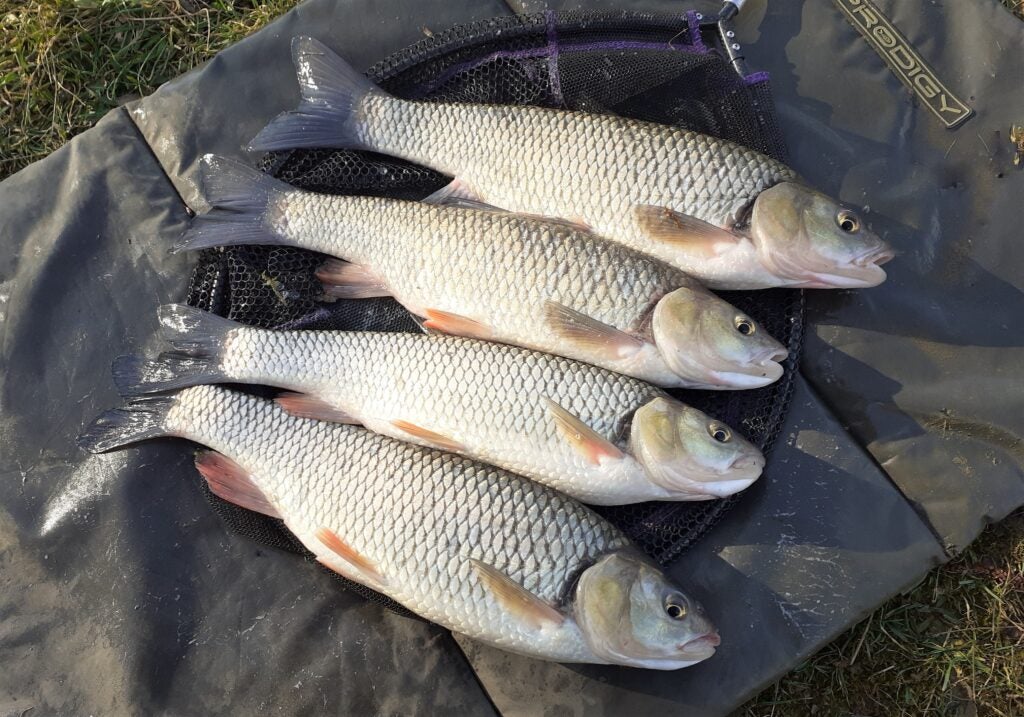
I did go back and visited the same peg again a few days later, only this time I tried feeding the far bank for longer before going over there. I cast much closer in when I did start fishing and once again the chub were having a go. Bites were not as frequent as before, but now I knew where to present my hook bait, when they came it was from better-sized fish. I suspect I would have caught a lot more if the sun hadn’t come out, along with the wind dropping. The bright, still conditions slowed everything down dramatically. I tried dropping my waggler tackle short, well down the far side ledge, eventually picking up two bonus bream there, but nothing else. Towards the end of the session, as the light faded, a couple more chub boosted my catch to a dozen good fish. I was well pleased with that; a nice tally that would have been well received on any river or canal, let alone a small club lake. These four pristine fish represented the average size of the rest of my haul.
The post Stillwater Chub first appeared on FishingMagic Magazine.
Continue reading...

Since moving to the Midlands I have discovered a wealth of lakes that hold chub. However, this species can be notoriously difficult to catch in stillwaters, blending into the background and becoming almost ghostlike. Odd fish sometimes turn up accidentally, but specifically targeting these elusive creatures is a big challenge. I first got into chub fishing on the canals around London, which presented a few similarities to venues I now frequent. Hotspots were away from busy areas, over on the quieter far bank, where you needed to cast inch-perfectly to get a response. Good chub weights were possible, even in matches, but these fish were never easy. Chub are rarely caught in competitions on the lakes I now fish, although they can turn up on quieter days. They are like their canal cousins, hugging far-off features and rarely moving into open water. You need to explore less-used pegs, island havens, and close to inaccessible, or heavily overgrown areas.
BUSH CRAFT

The lakes I currently visit, particularly the more overgrown ones, require all the cunning and watercraft I learnt on canals. Chub love overhanging foliage and can be difficult to entice away from it. Thick bush or tree cover are obvious haunts, but unlike canals where chub don’t have much competition, in well-stocked lakes they are often pushed away from likely features by carp. This creates swims that are not immediately obvious hotspots. It might be deeper margins, not necessarily heavily overgrown, but in less disturbed areas. Islands are obvious holding areas and can be fished the same way as the far bank on canals. The channels around them are worth exploring too, thanks to water circulation caused by undertow. Other spots chub love to inhabit are neglected, difficult to fish pegs, especially if there are lots of snags. This torpedo-shaped fish came from just such an area, where persistent loose feed eventually tempted it out.
STRANGE WAYS

I’ve found chub in some unusual places, such as in this instance on a carp-dominated snake lake. The fish was lurking under a far bank bush, holed up with a decent perch that graced my landing net a short time afterwards. Carp were swirling tight to the far side rat holes for the loose feed I was putting in, but I had noticed the bush over to my left was strangely quiet. An occasional helping of casters, instead of the pellets the carp were mopping up, soon brought a positive response. The chub fell for a shallow rig, tucked right in amongst the foliage it was hiding under. I have to think twice on this venue now, because I suspect there’s more of these surprise fish to be found on the fringes of the ravenous carp shoals. Other stillwaters in the area, reputed to have been stocked with chub, haven’t always produced any. This is not altogether surprising, because when I owned a lake, I never again saw any of the 500 samples of this species I stocked it with.
NATURAL APPROACH

I’ve accidentally caught stillwater chub on pellets, although on venues stuffed with carp, the best way to avoid the latter species is to simply loose feed casters. Chub love this bait and by feeding little and often, it’s normally not enough free stuff to interest greedy carp, but certainly enough to wake up the target species. I suspect when chub are in the margins, they get used to picking off insects, worms and berries that tumble into the water naturally. Catapulting a few casters into these areas regularly, resembles a natural food source plopping and trickling into the water. A great trick here when fishing over to heavy bush cover, is to deliberately fire some shells right into it, so they tumble down into all the inaccessible places. Then, by feeding up against the feature, the fish underneath will gradually pop their heads out and have a go. Casters are better than maggots, being less prone to tangling with foliage when small hooks are buried inside.
RIGHT HOOKS

Chub are streetwise, knowing all the tricks. Give them an inch and they will trash your rig instantly. They are masters at transferring hooks into snags, and even relatively small fish pull extremely hard. Strange as it might seem, I find stillwater chub require stronger tackle than their river cousins. I often scale right down on flowing water to tempt bites, finding it possible to land big fish on light lines and medium wire hooks. But the same gear easily gets trashed in lakes, particularly when fishing tight to areas with heavy cover and underwater tangles of weeds and roots. For stillwater fishing I use 0.14mm mono, tied to super-strong VMC EWG 7039 hooks; size 16 for double casters and size 18 for a single shell. I prefer the barbless version, or remove the barb if I can’t get that design. Stepping up like this doesn’t worry me on many lakes, because generally they are a lot more coloured than most of the rivers and canals where I would expect to find chub.
GOING BACK

I recently revisited a local club lake I hadn’t been to for some time. The last occasion I was at this place there were several shoals of chub milling around in the clear water, but these fish were extremely shy. Go anywhere near them and they would quickly fade away. This was a shame because there were some fair-sized samples amongst them. Something had changed since then, the venue had been stocked with numerous small carp and they had stirred a lot of colour into it. No signs of any chub on the surface, but I remembered having seen a big shoal previously up the far end of the lake, where an arm can only be accessed from one side. The grassy far bank didn’t offer much cover, but it looked deep over there. I decided to give it a go with insert waggler tackle, fishing the far side in the way I would have done years ago on many of my favourite Southern canal venues. Little did I know, but some of that old magic was about to return big time.
SETTLING IN

Plumbing up by using a small piece of tungsten putty on my hook, revealed a good three and a half feet of water tight to the far bank, with just over four feet down the shelf. I started in this area, about a metre out into open water. It took a while to get bites, carefully catapulting small helpings of casters around my insert waggler, trying to avoid attracting any carp. I missed the first three super-fast indications, before connecting with one of the culprits, a small gudgeon! A couple more of these fish followed before a proper bend in my 13ft float road signalled a 12oz chub. This was a great sign, but something wasn’t right because the bites dried up after that. I tried casting tighter over to the grassy far bank. I had noticed when I fed that odd fish were swirling for casters right on the waterline, also amongst odd clumps of marsh grass over there. I managed to slot my float in much closer and although my rig was now well over-depth, I left it there and waited…
IN THE ZONE

The tip of my peacock waggler didn’t go under, instead it started to glide along the far side. I struck and immediately there was a strong force attached. Something powerful and angry thumped hard against my rod tip several times, as I tried to keep it from diving into the remains of a big lily bed to my right. I had to give the fish some serious stick because, typically chub-like, it knew where all the snags were. It certainly didn’t like the open water when I coaxed it out there, so the next bag of tricks was trying to dive under the bank at my feet. My rod was arched round into a dangerous “U” shape, trying to keep the fish from the nearside roots and rushes. I eventually saw a flash of bronze under the surface and it was indeed a good chub. Once I got it in my landing net it was still thrashing about. Before unhooking, I quickly catapulted some more casters over to the far bank, to try and hold any more of the shoal that might be competing for my feed.
LIKE OLD TIMES

I managed to tuck my float in tight again and it wasn’t long before it sailed away. I was attached to another feisty fish, which followed the same routine the previous one had taken. This sample was even bigger and gave me a few hairy moments, particularly when I got it near the landing net. Many great memories started to flood back, catching good chub like this on similar tactics from the Lea Navigation at Ponders End and Tottenham Locks, also the Grand Union Canal at Denham and Cassiobury Park. I won matches with this species on these venues, back in the days when they were packed with chub. It was great fishing, before we had poles long enough and good enough to get over to the far bank. It all started with home-made drinking straw wagglers, then we had Canal Greys and similar Image all-balsa wagglers. Peacock came next and is still my favourite waggler material, only modified these days with translucent hollow plastic inserts.
CHANGING WAYS

I approached this session slightly differently to how I tackled canals. Back then I would carefully prime the far bank and only go over there once the chub were feeding confidently. This would entail messing around closer in on the pole, while building up the distant swim, instead of diving straight over there. That method won me loads of matches because anglers who went straight out for the chub only caught a few early mug fish. The shoals never came back after that. By getting the chub competing for loose feed, when I started to catch them during the second half of competitions, they just kept on coming. It took strong nerve to do this, but was worth the risk, resulting in some cracking hauls. This could have been the case here, only I was on a lake in the heart of Lincolnshire, fishing alone with just one feed line on the go. I kept small helpings of casters going in and gradually the swim had come alive. The chub were not in a feeding frenzy, but close to it.
NICE RESULT

My single-minded waggler attack resulted in twenty chub of various sizes, the better ones featured in this photograph. What was interesting was, apart from the bigger fish, there were also some under the pound mark, making me wonder if this species might be breeding in this particular venue. I was also left wondering if my old way of doing things, feeding the far side swim up before actually casting over there, might have pulled in even larger fish. Most of the better samples had resulted by casting extremely tight to the far bank. I had tried dropping short and deepening off, but that only produced missed bites. It seemed to me that presenting my rig up against the bank made it harder for these shy fish to spot any danger signs. Bites were ultra-positive there. I hadn’t fed a large amount of casters, believing if I had, the ravenous carp shoals would have moved in. I planned to return and try things a bit differently, to see if I could catch some even bigger fish.
EVEN BETTER

I did go back and visited the same peg again a few days later, only this time I tried feeding the far bank for longer before going over there. I cast much closer in when I did start fishing and once again the chub were having a go. Bites were not as frequent as before, but now I knew where to present my hook bait, when they came it was from better-sized fish. I suspect I would have caught a lot more if the sun hadn’t come out, along with the wind dropping. The bright, still conditions slowed everything down dramatically. I tried dropping my waggler tackle short, well down the far side ledge, eventually picking up two bonus bream there, but nothing else. Towards the end of the session, as the light faded, a couple more chub boosted my catch to a dozen good fish. I was well pleased with that; a nice tally that would have been well received on any river or canal, let alone a small club lake. These four pristine fish represented the average size of the rest of my haul.
The post Stillwater Chub first appeared on FishingMagic Magazine.
Continue reading...

